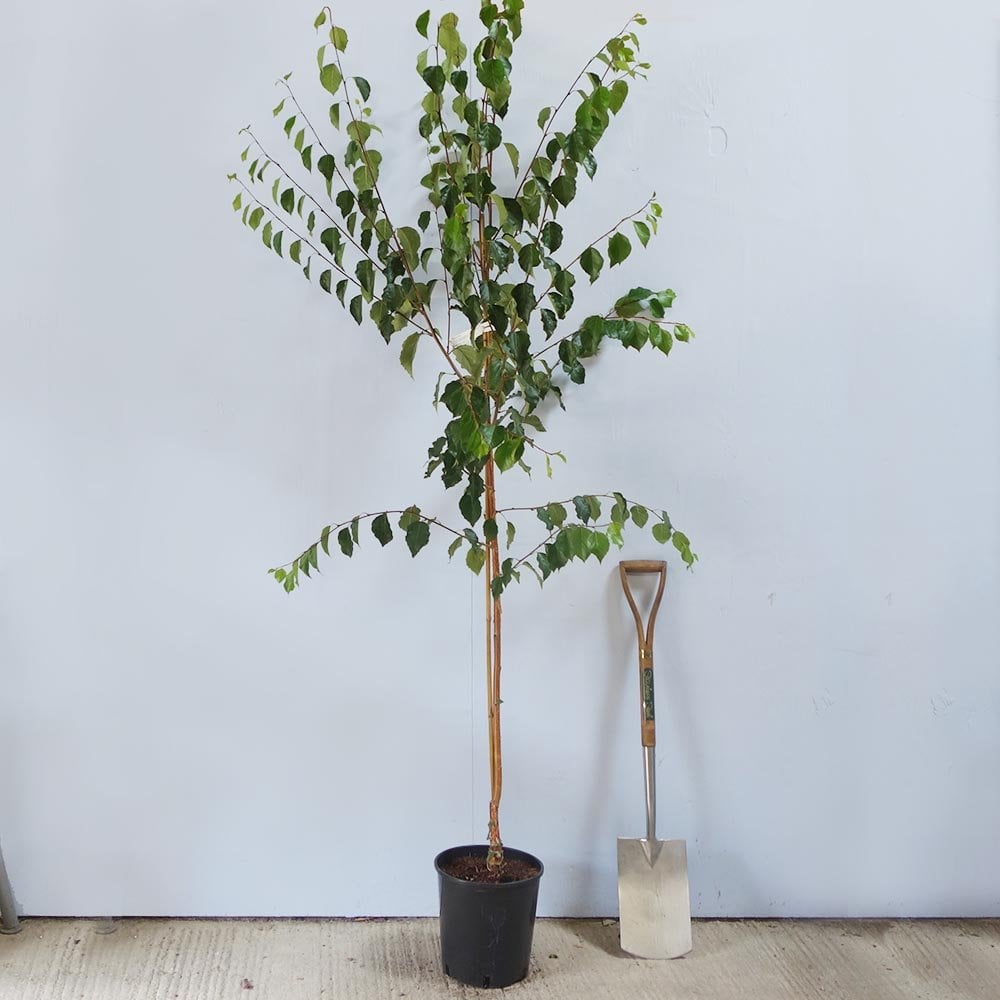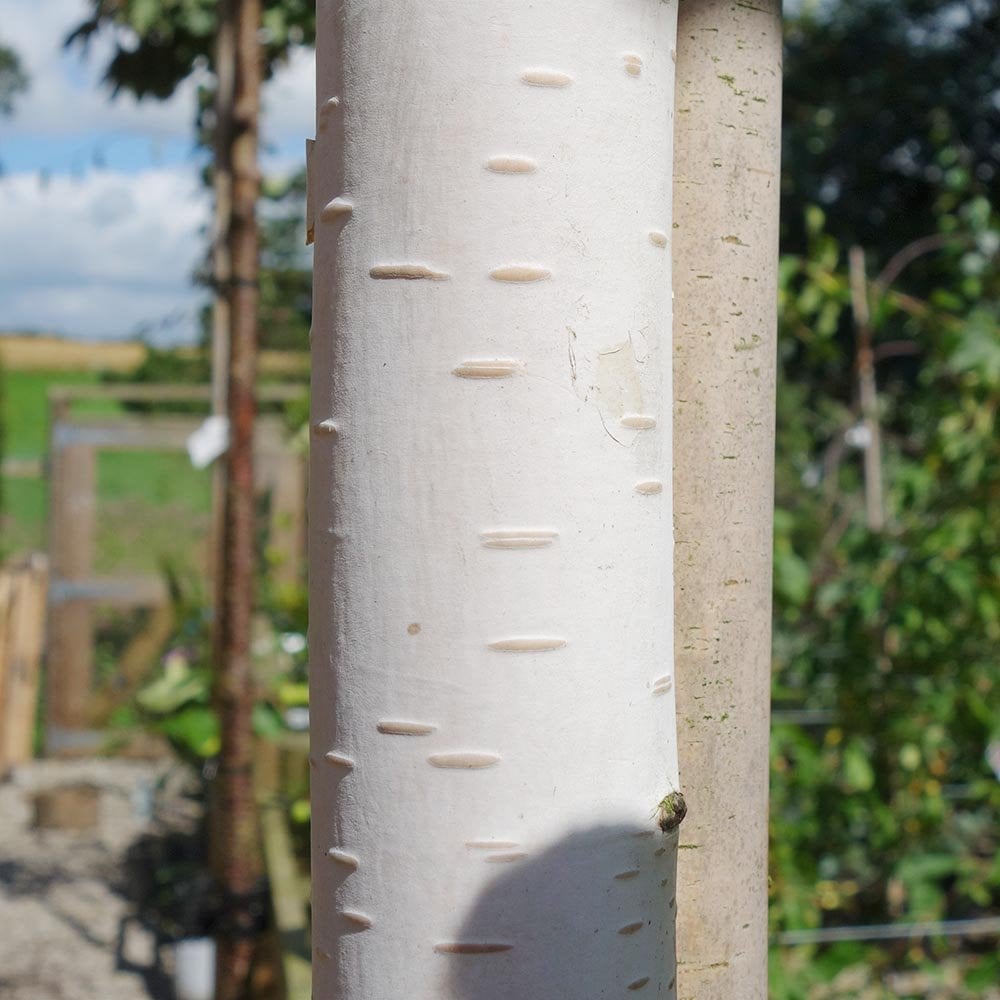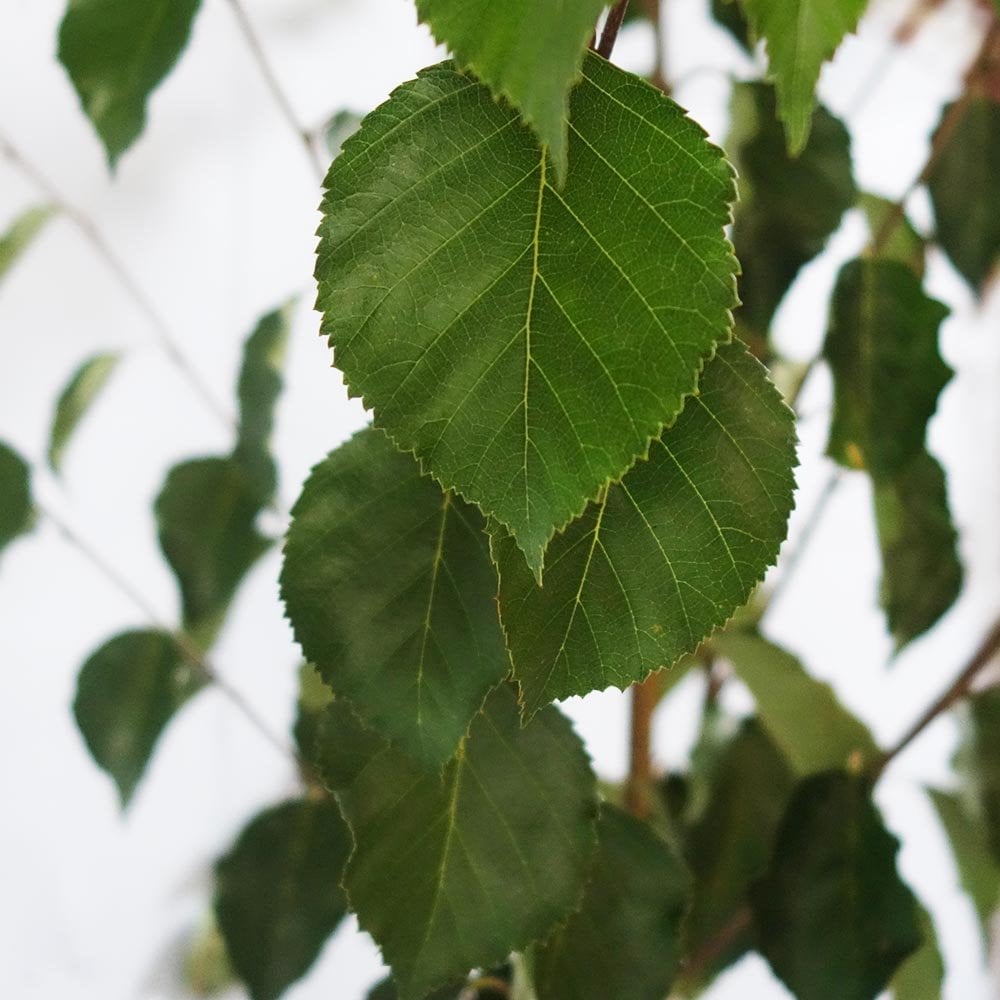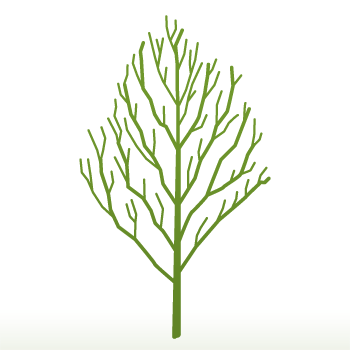Betula utilis jacquemontii 'Moonbeam' Tree
Betula utilis jacquemontii 'Moonbeam' Tree
Himalayan Birch Trees
Single stem tree, 150-200cm, 12L pot
Despatched within 7-10 days




Key features





Description
With bright white bark, Betula utilis jacquemontii 'Moonbeam' is a fantastic choice if you're looking for a smaller variety of Himalayan Birch. Green leaves turn a pretty yellow in autumn, but it's the stunning peeling white bark that takes centre stage all year round.
Betula 'Moonbeam' is slow growing and will reach around 5 x 3.5 metres in 20 years. The size makes it suitable for small gardens and it is a hardy tree that can tolerate most soil types and exposed positions.
AKA Himalayan Birch 'Moonbeam', Betula utilis var. jacquemontii 'Moonbeam'
| Small shrubs (1-3) | Young trees & 4+ small shrubs | Select semi-mature trees & shrubs (1-4) | All other mature trees (any quantity) | |
|---|---|---|---|---|
| Mainland UK ex. Scottish Highlands | £10 | £12 | £35 | from £55 |
| Scottish Highlands & the Islands | From £30 | |||
| Outside Mainland UK | Currently we are unable to deliver outside of Mainland UK | |||
Product Details
Key features





Description
With bright white bark, Betula utilis jacquemontii 'Moonbeam' is a fantastic choice if you're looking for a smaller variety of Himalayan Birch. Green leaves turn a pretty yellow in autumn, but it's the stunning peeling...
With bright white bark, Betula utilis jacquemontii 'Moonbeam' is a fantastic choice if you're looking for a smaller variety of Himalayan Birch. Green leaves turn a pretty yellow in autumn, but it's the stunning peeling white bark that takes centre stage all year round.
Betula 'Moonbeam' is slow growing and will reach around 5 x 3.5 metres in 20 years. The size makes it suitable for small gardens and it is a hardy tree that can tolerate most soil types and exposed positions.
AKA Himalayan Birch 'Moonbeam', Betula utilis var. jacquemontii 'Moonbeam'
Planting & Care
Delivery Information
| Small shrubs (1-3) | Young trees & 4+ small shrubs | Select semi-mature trees & shrubs (1-4) | All other mature trees (any quantity) | |
|---|---|---|---|---|
| Mainland UK ex. Scottish Highlands | £10 | £12 | £35 | from £55 |
| Scottish Highlands & the Islands | From £30 | |||
| Outside Mainland UK | Currently we are unable to deliver outside of Mainland UK | |||
MORE TO GROW YOUR GARDEN



















